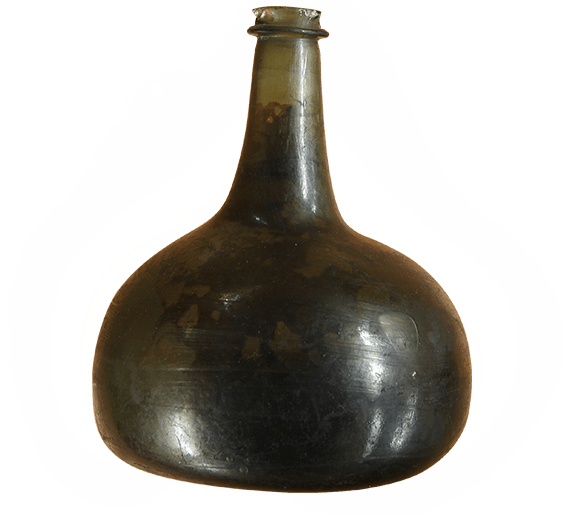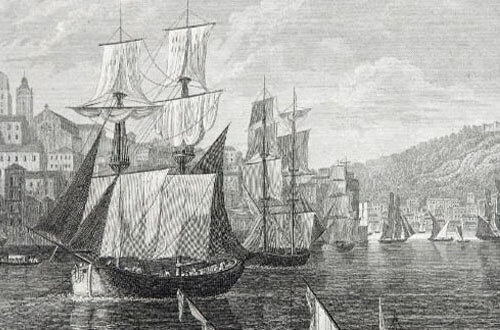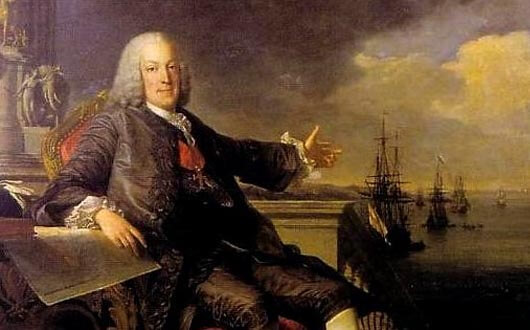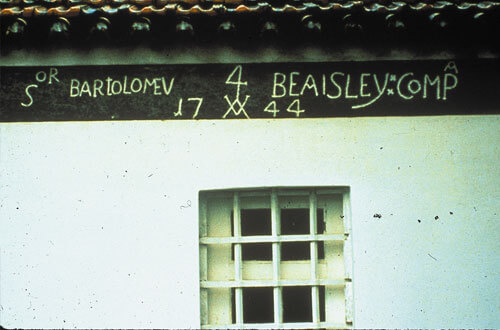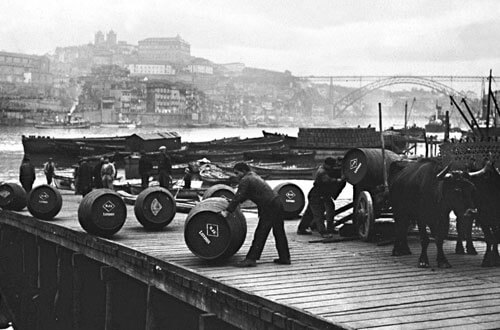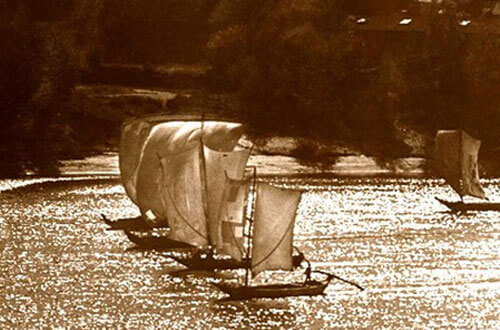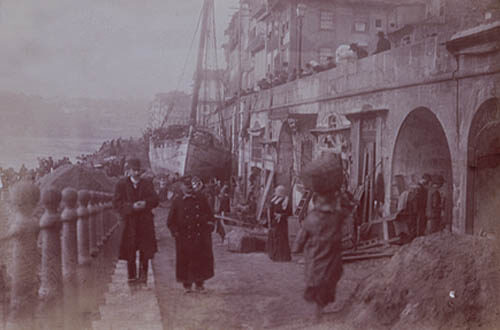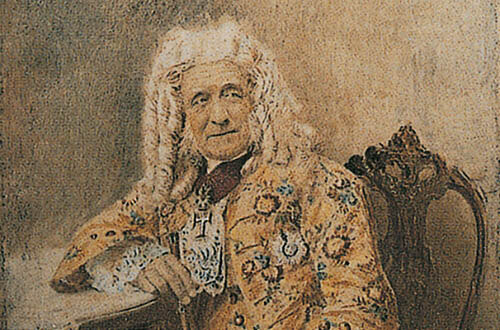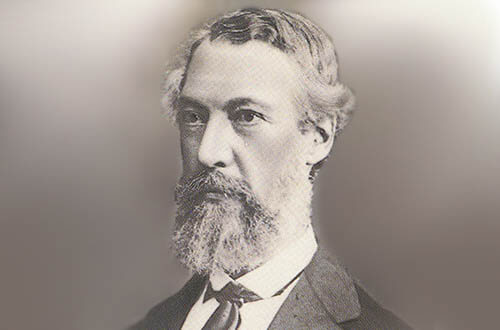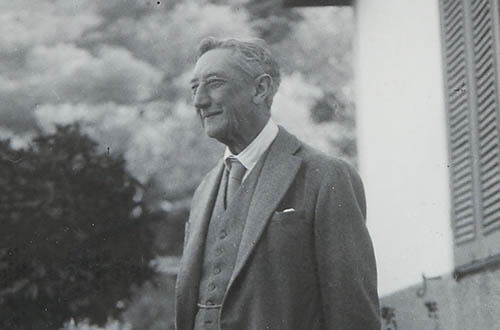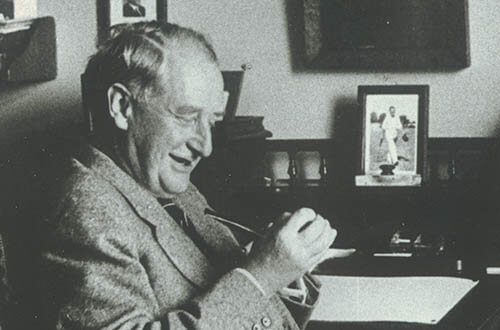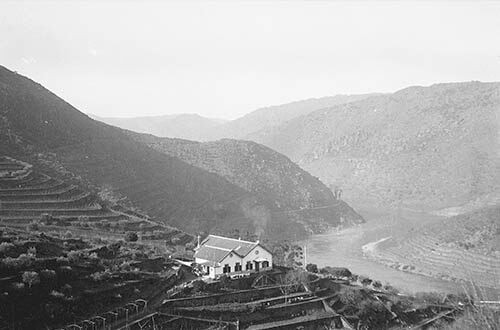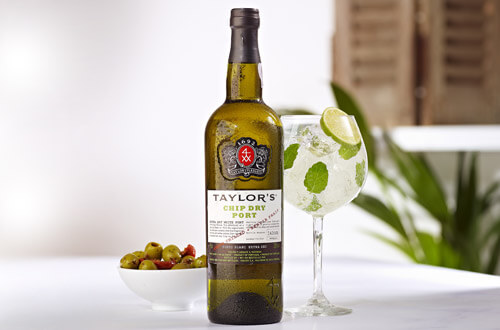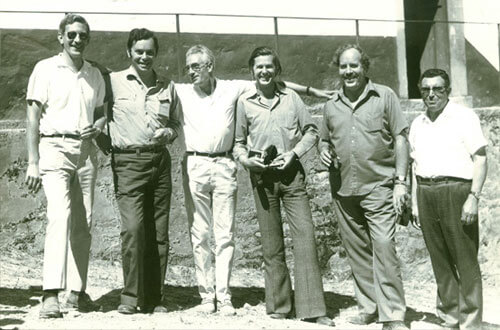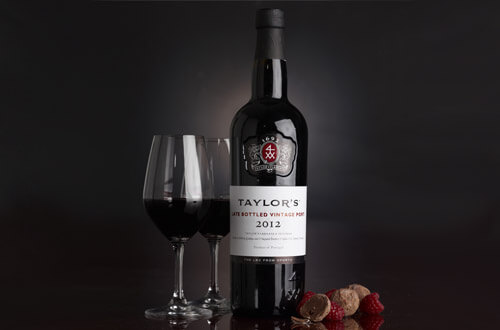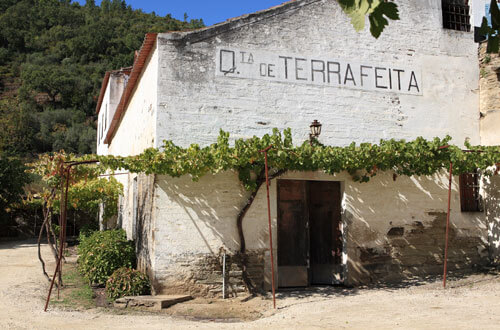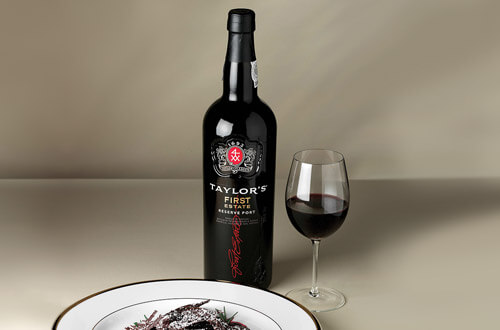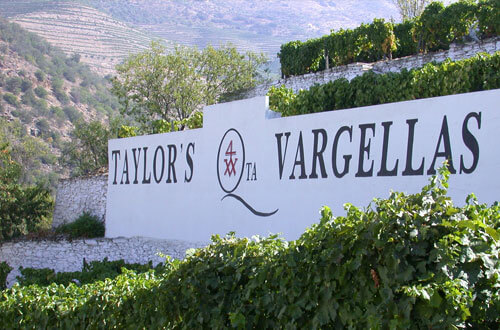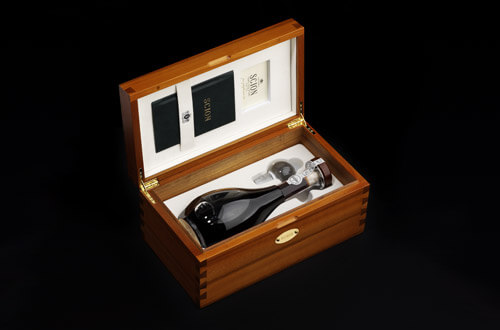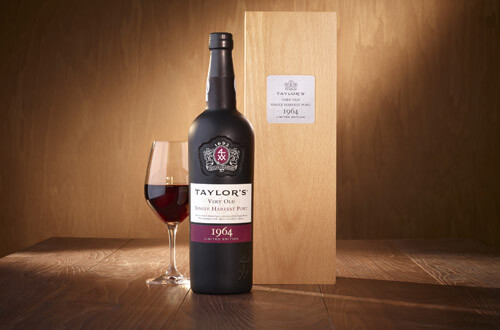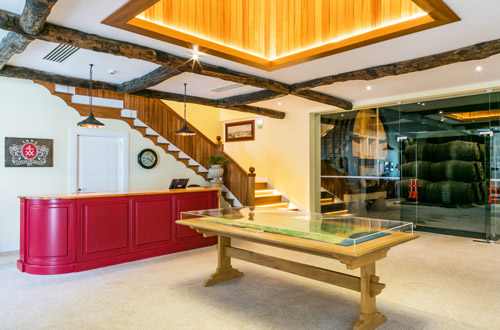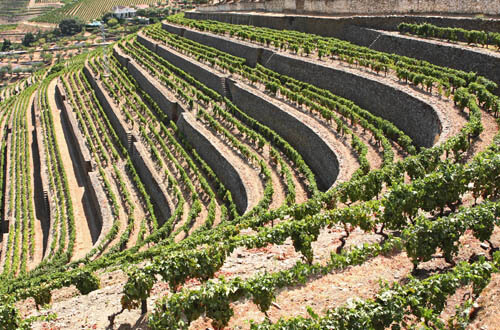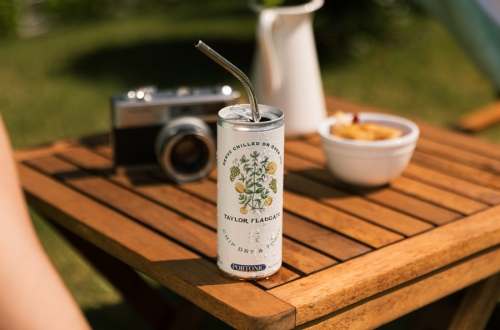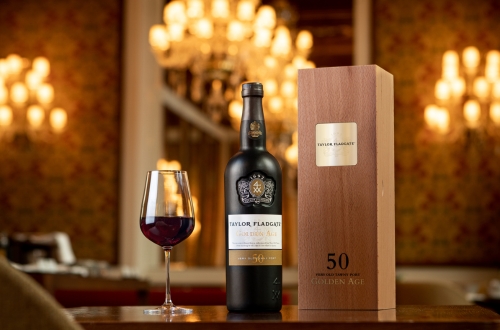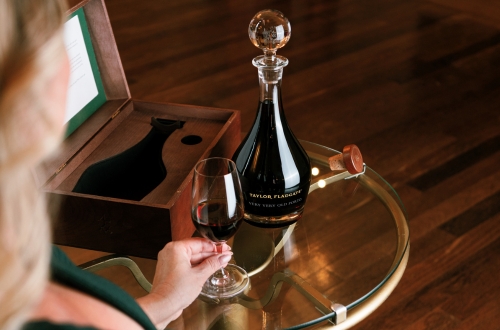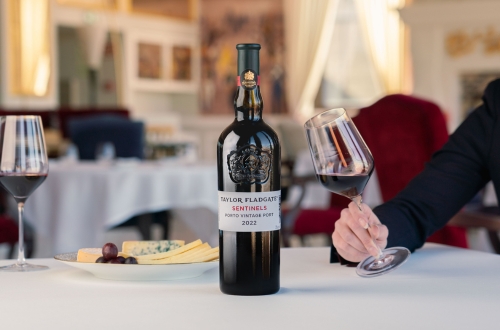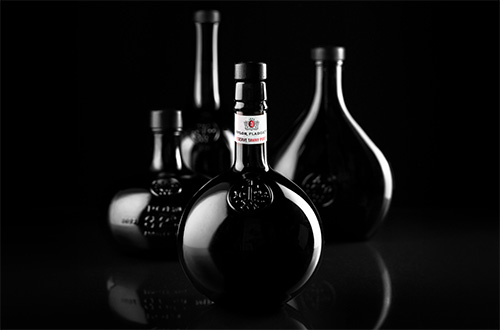1922
the beginning
Since its foundation in 1692 by Job Bearsley, the company has remained independent. Now well into its fourth century, it has thrived and prospered, establishing itself as one of the world’s most respected historic wine houses. This has been achieved through the perseverance, pioneering spirit and continuity of purpose of successive generations of family involvement.
Bearsley years
The story begins in 1692 with the arrival in Portugal of an English merchant called Job Bearsley. Little is known about the founder of the firm except that he was the owner of The Ram Inn in London’s Smithfield and his family owned land in Warwickshire and Staffordshire. He did not initially trade in Port wine but in ‘red Portugal’, the lean and austere wine of the Minho region in the north west of the country, with its verdant landscape and humid coastal climate. The centres of this trade were the harbour city of Viana do Castelo and the town of Monção on the banks of the Minho River.
The story begins in 1692 with the arrival in Portugal of an English merchant called Job Bearsley. Little is known about the founder of the firm except that he was the owner of The Ram Inn in London’s Smithfield and his family owned land in Warwickshire and Staffordshire. He did not initially trade in Port wine but in ‘red Portugal’, the lean and austere wine of the Minho region in the north west of the country, with its verdant landscape and humid coastal climate. The centres of this trade were the harbour city of Viana do Castelo and the town of Monção on the banks of the Minho River.
Others soon followed in Peter Bearsley’s footsteps and by the time that his sons Bartholomew, Charles and Francis joined their father in Portugal, British merchants had become a familiar sight to the farmers of the Douro Valley. Competition between the British shippers for the best wines had become intense. In 1744 Bartholomew Bearsley became the first British wine shipper to buy a property in the Douro. It was a bold move and gave him great advantage, allowing him to build relationships with the farmers and secure the first pick of their wines.
The property, at Lugar das Lages near the old town of Régua, is still owned by the company and its purchase is commemorated in Taylor Fladgate First Estate Reserve Port. During the Peninsular Wars the house on the property, known as the Casa dos Alambiques (‘House of the Stills’) was used briefly as a field hospital for the troops of General Wellesley, later Duke of Wellington.
Francis Bearsely outlived all his brothers and remained a partner in the Oporto house for 61 years from 1744 until his death in 1805 and in the London branch of the firm for 26 years from 1772 to 1798. During this long tenure he not only consolidated the gains of the first three generations but also steered the company through times of turbulence and change. These included the crisis years of the 1750s culminating in the creation by the Marquis of Pombal in 1756 of a monopoly company to regulate the Port trade.
1720's
According to some sources, Peter Bearsley was the first member of the English wine trade to make the journey himself, other merchants being content to buy the wines of the Douro through intermediaries.
1744
First Estate in Douro
Bartholomew Bearsley became the first British wine shipper to buy a property in the Douro. It was a bold move and gave him great advantage, allowing him to build relationships with the farmers and secure the first pick of their wines. The property, at Lugar das Lages near the old town of Régua, is still owned by the company and its purchase is commemorated in Taylor Fladgate First Estate Reserve Port.
Joseph Camo
When Francis Bearsley died, the company abruptly ran out of suitable family members to run it. Three of his sons-in-law became partners but none of them were qualified to lead the company. Dr Edward Whitaker Gray was the most distinguished of the three, a surgeon-turned-botanist who held important positions in such institutions as the British Museum and the Royal Society. He played little part in the company beyond persuading it to trade in some medicines. His son, Francis Gray, who died at the age of 30, was a partner in the Oporto house but spent most of his time in London.
This situation might have been disastrous as these were the years of the peninsular campaigns of the Napoleonic Wars. By 1808 the French army was fast advancing through Spain and there was a rush to make British possessions safe by transferring ownership to a friendly non-British company or, in the case of the wines, to arrange shipment to Britain.
Fortunately, the firm’s Oporto employees included an enterprising American of Turkish descent called Joseph Camo. As an American citizen the French would not regard him as an enemy and possessions entrusted to his care stood a chance of being left alone. In his book Oporto Old and New, published in 1899, the historian of the Port trade Charles Sellers describes Camo as ‘a typical American, a man full of energy, fertile in resource and never wanting in pluck, three qualities absolutely indispensable in those distressful days’. The company recognised that Camo was vital to its survival and awarded him a one-sixth share in the Oporto partnership in return for his remaining in Oporto to run the company after all the British merchants had left.
Camo’s first challenge was to arrange for as much wine as possible to be shipped to Britain. In December 1808 Napoleon occupied Madrid and given the ease of his progress, few ship owners or captains were keen to sail to Oporto. Three ships did eventually arrive with orders to collect 632 pipes of Port, including some consignments from other British-owned houses. But when they reached Oporto they were unable to tie up at the quayside. It was now February 1809 and torrential rain, combined with snow melt further upriver, had swelled the river to a flood and the sand bar at the entrance to the estuary was blocked by fallen trees and other debris. On 17th March Camo finally succeeded in loading the vessels but they remained unable to reach open sea. On 29th March the French army reached Oporto. The French troops did their best to loot the three vessels, which remained at anchor in the river, but were defeated by the size of the barrels. Eight pipes belonging to Offley were taken and one and a half pipes belonging to Webb, Campbell, Gray & Camo, the name under which the company was then known. In June British forces commanded by Lord Arthur Wellesley took Oporto in a swift and dramatic victory and in July the three ships finally docked safely at Portsmouth.
The enterprising Mr Camo continued to buy wine up until six days before the French entered Oporto and resumed business 21 days after Wellesley’s troops retook the city. None of the partners in other British houses would return for one or two years so he had a clear field. The year of 1809, which could have proved disastrous for the company, was instead one of great success.
From 1808 to 1811, Camo was the only working partner in the Oporto house. With peace established, he began to enjoy the fruits of his new position. He became a member of the Factory House, the building where the British Port shippers had their association and which they had re-occupied in November 1811. However, in 1812 he resigned his partnership to pursue other interests, heading for London and then to France where he died in 1816.
1808
Joseph Camo saves Port wine stocks
On 17th March Camo finally succeeded in loading the vessels but they remained unable to reach open sea. On 29th March the French army reached Oporto. The French troops did their best to loot the three vessels, which remained at anchor in the river, but were defeated by the size of the barrels. Eight pipes belonging to Offley were taken and one and a half pipes belonging to Webb, Campbell, Gray & Camo, the name under which the company was then known. In June British forces commanded by Lord Arthur Wellesley took Oporto in a swift and dramatic victory and in July the three ships finally docked safely at Portsmouth.
The enterprising Mr Camo continued to buy wine up until six days before the French entered Oporto and resumed business 21 days after Wellesley’s troops retook the city. None of the partners in other British houses would return for one or two years so he had a clear field. The year of 1809, which could have proved disastrous for the company, was instead one of great success.
Joseph Taylor
As well as giving the firm its current name, Joseph Taylor performed a pivotal role in the company’s history. His tenure bridged the gap between the Bearsley era and the arrival of the Yeatmans whose descendants own and run the company today.
At the time of Camo’s departure from Oporto, Joseph Taylor had already been a manager in the London office for a decade. He had been in frequent correspondence with Camo during the French occupation and was familiar with the workings of the Oporto company. Little is known of Joseph Taylor's background but Charles Sellers describes him as ‘familiar with the language of [Portugal], the people and their habits’. His correspondence suggests that he was a competent administrator with a meticulous eye for detail. No one in the company was better prepared to take over from Camo.
In 1813 Francis Gray, already in poor health, accompanied him to Portugal. On Francis Gray’s death in 1814, Joseph Taylor was made a partner. In 1824 the British economy slumped and the remaining partners were ageing and in poor health. In 1826 the London partnership went into liquidation and the only surviving son-in-law, Charles Campbell, was forced to give up his share in the Oporto firm. As a result Joseph Taylor became sole owner of the firm in Portugal and started up his own London company, Joseph Taylor Port & Brandy Merchants, later merging the two businesses. Having started as an office manager, he was now a substantial wine merchant.
Under Joseph Camo’s management, the firm had diversified successfully into the trading of dry goods. This had benefited the company for several years when a shortage of brandy limited the amount of Port that could be made. However Joseph Taylor steered the company firmly back towards Port and ensured that in this new, expansionist century, Taylor Fladgate reputation for quality would be unassailable. He was not, however, to see much of the new century himself. By 1835 his health had begun to fail and he had begun to address the question of succession. His choice fell on two enterprising members of the wine trade. One was Morgan Yeatman, a wine merchant from Dorchester in the south west of England who had been a customer of Taylor Fladgate for many years. The other was John Fladgate, a contact of Joseph Taylor's agent Matthew Clark who was trading as a wine merchant in London.
John Fladgate
John Fladgate was the first of the new partners to move to Oporto, arriving in 1836. In 1838 a partnership deed was signed in Oporto between John Fladgate and Morgan Yeatman and the firm adopted its present name of Taylor Fladgate & Yeatman. John Fladgate’s overriding passion was viticulture. In 1844 he bought the magnificent estate of Quinta da Roêda for the firm and began to divide his time between the estate and Oporto. John Fladgate focused on the quality of the wine, Morgan Yeatman on developing the business.
The acquisition of Quinta da Roêda, one of the finest vineyards in the Douro, was a shrewd move and the quality of its wine further enhanced the firm’s reputation. But then disaster struck: first oidium in 1851 and then phylloxera after 1872. The Upper Douro was worse affected by phylloxera than the Lower Douro. By 1881 properties that had previously yielded a hundred pipes were producing just three.
John Fladgate’s passion for the Douro Valley turned to determination that it should survive. His extensive research into phylloxera was summarised in his open letter of advice to the Douro farmers, O Phylloxera no Alto-Douro. In 1872, in recognition of his services to viticulture, he was given the title of Barão da Roêda. He was also made a Comendador da Ordem de Cristo. He also investigated alternative crops that could replace the revenue lost through the damage to the vineyards, including the breeding of silkworms.
In 1862 John Fladgate bought Roêda from the company for himself and in 1889, after the death of his only son Francis and of Morgan Yeatman Jr, he sold Roêda to the house of Croft for £7,000. After his retirement the Fladgate male line in the company came to an end and it was Morgan Yeatman Jr’s sons Harry and Frank who would lead the firm into the 20th century. However, four of John Fladgate’s daughters married leaders of the Port trade. One of them, Helen, married Pedro Gonçalves Guimaraens of Fonseca whose distant cousin, David Guimaraens, is today Taylor Fladgate head winemaker. Another became the wife of the second son of Baron Forrester, the legendary figure who created the first detailed map of the Douro Valley.
Yeatman Era
At the end of the 19th century the Upper Douro was a desolate place. So many vines had been destroyed by phylloxera that most Port wine, even most Vintage Port, was sourced from the Lower Douro. But the Upper Douro was the only place for high quality Port and if Taylor Fladgate was to maintain its top-ranking position it needed an estate there to replace Roêda. By now a solution to phylloxera – grafting onto American rootstock – had been found, offering a degree of security to those with the determination and funds to invest in vineyards.
Nevertheless such investors were rare and even today the hillsides of the Upper Douro are blemished by mortórios (‘dead vineyards’), old stone terraces, broken down and overgrown, that were simply abandoned when the vines died. The vineyard eventually chosen was Quinta de Vargellas. Its acquisition proved to be one of the most significant and auspicious episodes in Taylor Fladgate history. Located in the Douro Superior on the remote eastern reaches of the Portuguese Douro, Vargellas had acquired a reputation as the source of the finest Port wines as early the 1820s. Today it ranks among the great vineyards of the world.
Notwithstanding the outstanding reputation of the Vargellas wines, the acquisition was a bold step for the firm as phylloxera had wrought havoc on the property. By the time of the purchase, the production of its vineyards is recorded as having fallen to only about four pipes.
The monumental task of rebuilding Vargellas fell to Frank Yeatman, the key figure in the history of the firm in the first half of the 20th century. Nicknamed ‘Smiler’, he was a formidable Port wine taster. Grandson of the first Yeatman partner, he was the first member of the family to live and work more or less permanently in the Douro. He supervised the making of the wine while his brother, Harry O Yeatman, was based in London looking after sales. Smiler was a much-loved figure, tall, charming and diffident. He calmly steered the company through two world wars and periods of great political and financial instability. Without him it is not clear that the company would have survived those troubled times. His other passions were golf (not perhaps an ideal game if you live in the Douro) and Ceylon tea which he shipped in by the chest every year.
In 1919 Harry O died and neither of his sons wanted a partnership, so Smiler briefly became the sole owner. The London house closed and from that point the company was run solely from Portugal. However Smiler’s son Dick was keen to join the firm. He studied at Montpellier in France, the first British Port wine shipper to qualify there as a viticulturist. He joined the company at the same time as his cousin Stanley Yeatman. From 1923 the company was managed by Dick and Stanley under the experienced and benign guidance of Smiler, a successful partnership that would continue until the latter’s retirement at the end of 1949. By the end of his career Smiler had been responsible for no fewer than 50 Port harvests.
Under the leadership of Dick and Stanley the business thrived. Both had a keen interest in viticulture and in implementing new ideas. In 1927 at Quinta de Vargellas they created the first varietal blocks, separate terraces each containing a different Douro grape variety – a revolutionary idea in a region still accustomed to mixed plantings. By fermenting the grapes separately they gained much valuable knowledge about the traditional Douro varieties and laid the foundation for Taylor Fladgate unique research library of single grape variety wines.
They also planted parts of Vargellas that had not previously been cultivated. In 1934 they introduced the first Dry White Port to the market. In 1949 they bought the Fonseca Port house. And they developed a reputation for their picnics. They and their guests would ride in barouches from the railway station at Vargellas to the quinta with old Mrs Yeatman, Smiler’s widow, carried on a litter. And the picnic hampers were enormous. Ron Symington, of another Port house, was once overheard to say, ‘Shall we take a picnic or sit next to the Yeatmans?’
When Stanley died suddenly in 1960 Dick bought his share and briefly became the sole owner before giving partnership participations to Bruce Guimaraens and to Huyshe Bower, a relative of the Yeatmans who had joined the firm in 1959. When Dick died in 1966, his majority share passed to his wife Beryl who shortly afterwards invited her nephew, Alistair Robertson, to join the firm.
Dick and Stanley lived well but, in the austere post war years, the expense involved in making Port wine of the finest quality was not in reality funded by sales. Taylor Fladgate had done well in the two decades leading up to the war and as a result Dick was well off and content to subsidise the firm. Although sales were slow he continued to add to the reserves of wine ageing in the company’s lodges.
1893
Taylor Fladgate buys Quinta de Vargellas
In 1884 the railway was extended eastwards along the bank of the Douro, leading to the expropriation of part of the Vargellas vineyard and in 1886 to the construction of the Vargellas railway station. In the same year, Lower and Middle Vargellas were purchased by the general contractor of the railway, Domingos Burguets, who went on to sell both properties to Taylor Fladgate in 1893. In 1896 the firm purchased the third vineyard, Upper Vargellas, from the Countess of Azambuja, daughter of Dona Antónia Ferreira, founder of the Ferreira Port house, and the three properties were finally merged into one.
1934
Chip Dry, The First White Port
Taylor Fladgate introduced Chip Dry, a new style of white aperitif Port, in 1934. Made from traditional white grape varieties, it is fermented for longer than usual to give it an appetisingly crisp dry finish. Several years of ageing in oak vat and careful blending complete the fresh fruit flavours with an elegant, complex nuttiness.
Recent Past/Present
Alistair Robertson was born in Oporto in 1937 into a family with close connections with the Port wine trade. Alistair’s early youth was spent in Portugal and after school in England he went on to do national service in the Scots Guards. At this time he met Gillyane Scoones, whom he was later to marry, and his future father-in-law, who was director-general of the Brewers’ Society, advised him to join the brewing industry where he displayed a talent for sales and marketing.
When Beryl Yeatman issued her invitation, Alistair was therefore well qualified to take over. While the company was financially sound and had large mature stocks of Port wine and an unmatched reputation, it did not sell enough to make a reasonable trading profit.
Port wine sales generally had not recovered after the World War II and in the post war period many smaller Port firms were merged into larger ones. Alistair set about pushing through changes, including the re-organisation of the company and a drive to increase sales. In this he was ably assisted by Huyshe Bower who sought out and developed new international business for Taylor Fladgate, reducing the firm’s historic dependence on the British market and allowing it to benefit from the growing interest in fine wines in places such as North America and Asia. This pioneering work laid the foundations for the global recognition that Taylor Fladgate enjoys today.
The firm’s extensive reserves of fine cask aged tawnies, built up over the years, also came into their own. In 1973 the Instituto do Vinho do Porto (IVP), the trade’s governing body, created new rules allowing producers to state the age on the labels of old tawny Ports. Taylor Fladgate was the first major house to take advantage of this, launching a full range of 10, 20, 30 and 40-Year-Old Tawnies which it continues to offer to this day.
The task of supervising the wine making and looking after Taylor Fladgate extensive Port wine stocks as well as the skilled and delicate work of making up the blends fell to Jeremy Bull, Taylor Fladgate technical director and one of the most experienced tasters in the Port trade. Jeremy Bull’s involvement lasted for a quarter of a century, providing valuable continuity.
The 1970s saw the start of a revival in the market. Larger facilities were needed and in Vila Nova de Gaia new bottling facilities were built and additional lodge space acquired to accommodate the stocks of ageing Port wine needed to support the growth in sales.
Up in the Douro Valley, a new winery was constructed at Lugar das Lages, the site of Taylor Fladgate first Douro property purchased in 1744, and new vineyards were planted using modern landscaping techniques.
1974 witnessed the April revolution which brought about a change of regime in Portugal and introduced a period of political and economic turmoil, a challenging time for Taylor Fladgate and for the country as a whole.
However, the return of stability in the 1980s was followed by good years for the wine trade. Under Alistair Robertson’s leadership, Taylor Fladgate focused on research into both winemaking and viticulture. Bruce Guimaraens, as estates director, played an important role in the development of the firm’s quintas during this period. The advances in both wineries and vineyards, always tempered by a respect for traditional methods, bore fruit in a series of highly acclaimed Vintage Ports including the Taylor Fladgate 1992, awarded 100 points by the influential wine critic Robert Parker.
In 1990 Bruce Guimaraens' son David joined Taylor Fladgate wine making team after graduating in oenology from Roseworthy Agricultural College in Australia. He brought with him fresh ideas gained from wine making experience in Australia, California and Oregon. The 1994 was the first Taylor declared vintage made under his supervision, another highly acclaimed 100-point wine.
1970
First Late Bottled Vintage (LBV)
Alistair Robertson’s most significant and far-reaching innovation was LBV. Alistair’s idea was to produce a Port wine of a single year that had been fined and filtered so it could be drunk by the glass, without decanting, as soon as it was bottled. This was achieved by allowing the wine to remain longer in the wood than a Vintage Port, in other words by ‘late bottling’. Taylor Fladgate Late Bottled Vintage was launched in 1970 with the 1965 vintage. Although initially met with a measure of scepticism by some members of the Port wine trade, LBV was a resounding success and gradually other Port houses launched their own versions.
1974
Taylor Fladgate buys Quinta de Terra Feita
The eventful year of 1974 saw the purchase of the fine old estate of Quinta de Terra Feita. The acquisition of Terra Feita, from which Taylor Fladgate had been buying wine since the previous century, was part of the firm’s strategy of securing and controlling its sources of very high quality grapes for its Vintage Ports.
1988
Introduction of Taylor Fladgate First Estate
Taylor Fladgate First Estate Port is a classic reserve blend produced to commemorate the firm’s acquisition in 1744 of its first property in the upper Douro Valley, the Casa dos Alambiques at Lugar das Lages
1995
Introduction of Vargellas Vinha Velha Vintage Port
Located in the remote eastern reaches of the Douro Valley, Vargellas is known for its elegant, scented wines, with their fine focused fruit and well integrated sinewy tannins. It is also known as a Vargellas Vinha Velha Vintage Portource of one of the rarest and most collectible vintage ports of all, Vargellas Vinha Velha, made in very small quantities from the produce of the oldest vines on the estate.
The terraced plots containing the oldest vines on the property account for over 15% of the estate’s total production. The Vargellas Vinha Velha vintage port represents a very limited selection of the production of these old vines and seldom accounts for more than about 2% of the total production of the property.
1997
Taylor Fladgate buys Quinta do Junco
Quinta do Junco is a relatively recent addition to the Taylor stable, although a vintage ledger shows that Taylor Fladgate bought wine from the property at the end of the 19th century. Prior to its acquisition by Taylor Fladgate in 1997, its owners were bankers.
The early history of Quinta do Junco is not well documented. However the estate is known to have been in existence for at least a century and a half. Like Quinta de Terra Feita, it lies in the heart of the original 1756 demarcation.
In the 1761 classification, Quinta do Junco was awarded the coveted full feitoria status, identifying its wines as being of the finest quality, entitled to be sold at a higher price and to be exported to the demanding English market. Today’s classification continues to rank Quinta do Junco, as well as Vargellas and Terra Feita, in the ‘A’ category reserved for only the best Port vineyards.
2000
Adrian Bridge appointed Managing Director
In 2000 Adrian was formally appointed Managing Director and set about ensuring that the company was able to adapt successfully to the accelerating pace of change both in the Port trade and the wider global wine market. It was vital to ensure that the business achieved the right balance between specialisation in the finest quality Port wine and a scale which would allow it to thrive in an increasingly competitive environment, where rapid consolidation was occurring in both production and the trade.
2009
Biodiversity Prize
Several plots both at Quinta de Vargellas and Quinta de Terra Feita have been converted to a new environmentally sustainable planting system developed by the firm’s respected head of viticulture António Magalhães and technical director David Guimaraens. At Vargellas, methods have been developed for the more efficient management of the old historic walled terraces allowing them to be preserved for the future.
Thanks to these efforts, The Fladgate Partnership was awarded the BES Biodiversity Award in 2009.
2010
Taylor Fladgate Scion, the first Port wine before Phylloxera
In the autumn of 2010, the wine was launched as a very limited edition, under the name of Scion. Scion is one of the oldest and rarest aged tawny ports ever sold and one of very few pre-Phylloxera wines from any vineyard region to reach us in perfect condition.
2014
Taylor Fladgate Port 1863
Taylor Fladgate Single Harvest 1863, drawn from the firm’s collection of very rare and valuable cask aged Ports, represents a unique piece of wine history. Like a time capsule, it offers a fascinating glimpse into a distant past.
The harvest of 1863 was one of the finest of the nineteenth century and the last great Port vintage before Phylloxera spread throughout the Douro Valley.
First Very Old Single Harvest, the SH 1964
Taylor Fladgate holds one of the most extensive reserves of very old cask aged Port of any producer. They include a collection of rare Single Harvest Ports. These are Ports from a single year which age to full maturity in seasoned oak casks and display the year of harvest on the label.
Taylor Fladgate has decided to make a limited release, each year, of a Single Harvest Port made 50 years previously. The first in the series was a 1964 Single Harvest.
2016
Taylor Fladgate Visitors’ centre and restaurant refurbishment
Taylor Fladgate has undergone a major refurbishment of its cellars and visitor centre. The new tourism facilities offer a complete insight into the world of Port and a chance to taste its famous wines.
2017
Taylor Fladgate 325th Anniversary
To celebrate its 325th anniversary, Taylor Fladgate created a limited edition of a commemorative Port.
A unique bottle has been specially produced based on a bottle made at around the time of Taylor Fladgate foundation. It is the earliest example of an intact dated bottle bearing the merchant’s mark, in this case the ‘4” and "XX’ symbol still used as Taylor Fladgate trademark to this day.
Present/Into Future
The year of 1994 saw the continuity of family management assured for a further generation with the arrival in Portugal of Adrian Bridge and his wife Natasha, Alistair and Gillyane Robertson’s eldest daughter. Adrian brought with him extensive international business experience as well as leadership skills which would be vital in preparing the firm for the challenges of the 21st century. After winning the Sword of Honour at the Royal Military Academy Sandhurst, he had spent six years as an officer in the Queen’s Dragoon Guards followed by a further six in London running the US equity sales team for NatWest Investment Bank. On his arrival in Portugal he assumed responsibility for Port sales in Britain and the USA, overseeing strong growth in both of these key markets.
2021
First Ready to drink Portonic: Chip Dry & Tonic
Taylor Fladgate was the first house to produce a dry white Port: Taylor Fladgate Chip Dry, which was launched in 1934 and has since won devoted followers all over the world.
By adding tonic water, Taylor Fladgate Chip Dry & Tonic was conceived as a versatile and convenient solution that enabled new drinking moments and reached new consumers.
Easy to transport and ready to be enjoyed anywhere, it's a refreshing and elegant aperitif presented in a 250ml can.
2022
First 50YO Tawny - Taylor Fladgate Golden Age 50 YO
A decade after the launch of Taylor Fladgate 50-year-old Single Harvest, we have seen a growing interest in exceptional wines that are half a century old.
From this high demand came Golden Age, an extraordinary Port that has aged for half a century in old oak casks and reached its golden age in our cellars. These cellars, due to their architecture and strategic location, provide the ideal conditions for a long and gentle ageing of Port wine.
Finely constituted and wonderfully balanced, Taylor Fladgate Golden Age 50 YO Tawny is in perfect conditions of elegance, complexity and splendour and is therefore indispensable at a 50th birthday celebration.
2022
First VVOP : Taylor Fladgate Very Very Old Tawny Port
The latest in a series of limited editions of exceptional and very rare Ports, Taylor Fladgate VVOP is drawn from the treasure trove of very old wines that age silently in Taylor Fladgate cellars.
VVOP confirms Taylor Fladgate place as a leading producer of the finest very old Ports.
With unrivalled harmony and finesse, it is a masterpiece of cask ageing and is one of the oldest batches released to date.
2024
Release of Vintage Taylor Fladgate Sentinels
Taylor Fladgate Sentinels is a unique blend made from wines produced at Taylor Fladgate historic properties in the Pinhão Valley.
This blend is based on ‘parcel selection’, a meticulous process of choosing wines from specific plots at each of the properties. Like Taylor Fladgate Single Quinta Vintage, Sentinels Vintage will be produced in years when there is no declaration of the classic Taylor Fladgate Vintage.
These years produce wines with the potential to age and improve in bottle, but which are accessible and enjoyable while young.
Unlike Single Quinta Vintage Ports, which reflect the character of a single estate, Sentinels Vintage Port represents a harmonious fusion of wines from Taylor Fladgate four heritage estates, located in the heart of the oldest demarcated region in the world.
2025
Release of Taylor Fladgate Historical Collection IV: The Globe
A tribute to the rich history of Port and the long legacy of craftsmanship that has characterised Taylor Fladgate since 1692, The Globe celebrates an era of innovation that transformed the way Port was stored and served.
Inspired by the design of the ‘shaft and globe’ bottle from the mid-17th century, its elegant and timeless design makes it not only a collector's treasure, but also an exceptional gift for any occasion.
The Historical Collection IV: The Globe represents a combination of Taylor Fladgate tradition of excellence combined with our forward-looking approach.

